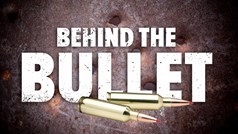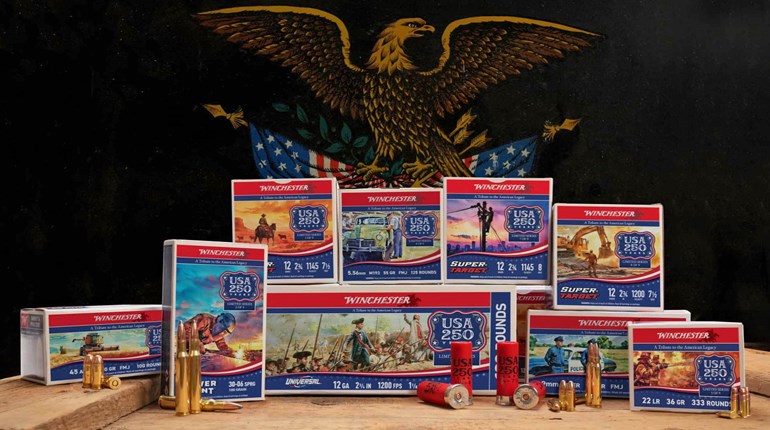
Americans love speed. It’s not a bad thing, but it is a fact. Whether it's cars, airplanes or cartridges, we like things that go fast. The first "magnum" cartridges, derived in the early 20th century, were designated so because their velocities exceeded that of the normal cartridges of the day, and that moniker has stuck around for a century. I’m not sure who sat around the Remington campfire and came up with "Ultra Magnum," but it certainly is applicable. If the Magnums go fast, then the Ultra Magnums will better their speed. And better the speed they do!
It was at the end of the 20th century that Remington released a new cartridge design, based on the big .404 Jeffery case, but with most of the taper removed, the rim turned down just a few thousandths, and necked to hold the .308” diameter bullets that we Americans love as much as we love speed. Having no belt—in the fashion of the Jeffery cartridge—a good 30˚ shoulder would provide the headspacing, and a case neck of just shy of one caliber would give sufficient neck tension. The resulting cartridge case measures 2.850”—which fits perfectly in the .375 H&H length actions—with all sorts of powder capacity, driving a 180-grain bullet to a muzzle velocity of almost 3300 fps. Now, that’s 300 fps faster than the already-speedy .300 Win. Mag. and nearly 600 fps faster than the .30-’06 Sprg.
 Using a cartridge overall length of 3.600”—again in common with the .375 H&H Mag.—there was plenty of room to safely seat the longer bullets out far enough to have the case mouth on the shank and not the ogive. Remington was definitely onto a major player in the velocity game, as well as a cartridge that would deliver impressive energy figures. However, all that velocity would come at a price, in the form of strain on both bullet and barrel, and in increased recoil. Unless the rifle fits the shooter very, very well, the recoil of a .300 RUM can be hellacious. With a muzzle brake added, recoil can be tamed to within reasonable levels, and while my ears have had all the muzzle brake they are willing to handle, the .300 Ultra is one of the few cartridges where I feel it is not only helpful, but actually necessary.
Using a cartridge overall length of 3.600”—again in common with the .375 H&H Mag.—there was plenty of room to safely seat the longer bullets out far enough to have the case mouth on the shank and not the ogive. Remington was definitely onto a major player in the velocity game, as well as a cartridge that would deliver impressive energy figures. However, all that velocity would come at a price, in the form of strain on both bullet and barrel, and in increased recoil. Unless the rifle fits the shooter very, very well, the recoil of a .300 RUM can be hellacious. With a muzzle brake added, recoil can be tamed to within reasonable levels, and while my ears have had all the muzzle brake they are willing to handle, the .300 Ultra is one of the few cartridges where I feel it is not only helpful, but actually necessary.
The velocity increase does have its good side, and that shows up instantaneously with regard to trajectory. Using the Federal 180-grain Trophy Bonded Tipped load, with a muzzle velocity of 3200 fps and a 250-yard zero, the bullet will be 3” low at 300 yards, 7” low at 350, 12.6” low at 400 yards and 19.6” low at 450 yards, yet the highest the bullet will travel is 2.5”, at 150 yards. This means that even on a deer-sized set of vital organs, the .300 RUM is a dead-hold out to 300 yards; that’s a pretty flat shooting cartridge. Add in a lesser time of flight, and you’ll see an appreciable advantage when it comes to wind deflection, making hunting shots a bit easier, once you’ve become proficient with the big cartridge.
When a cartridge generates this sort of velocity, things will not only heat up quickly, but will show wear earlier, diminishing barrel life. Estimates vary, regarding barrel life, but I’ve heard guys are seeing significant throat wear in as little as 1,000 shots. Now, for a hunting rifle, that is a considerable amount of time, but for a shooter who wants to use his rifle routinely, it’s a relatively short life, even if the barrel life is twice that number. My suggestion would be to try and avoid five-shot groups, as you’ll generate a ton of heat, and to keep that barrel as cool as you can to avoid degradation.
Bullet choice is also rather paramount when dealing with the .300 Ultra; the standard cup-and-core bullets will definitely show their weaknesses if a close shot is offered at the Ultra Mag’s velocity. I’d highly recommend bonded core or monometal projectiles, unless you’re absolutely certain that the bullet will have a chance to slow down, and by that I mean your shot will be greater than 250 yards. I’ve had very good results with the Swift Scirocco II in this cartridge, especially the 180-grain variety, as the bullet is strong enough to withstand high impact velocities, yet provides a B.C. good enough for hunting ranges on the longer side. Undoubtedly, the .300 RUM prefers the longer bullets, with more bearing surface, to get those pressures that generate the higher velocities. Most of my best handloads have been built around the heavy-for-caliber bullets, and stout ones at that.
If you choose to handload for the .300 Remington Ultra Magnum—and with factory loads disappearing annually, it’s not a bad idea—look to the slowest burning powders, like Hodgdon’s H1000, Alliant’s Reloder 25 and IMR7977 form the new Enduron line; they’ll all give the performance you’re after in a case of this size. Spark it with a Large Rifle Magnum primer, for sure, as powder charges will easily approach 100 grains.
If you like having the biggest, largest and fastest of the .300 Magnums, the .300 RUM is certainly among the top of the heap. While not as efficient or cuddly as some of the milder cartridges, it will certainly put an exclamation point on the end of your hunting sentence.
Looking for previous installments of Behind the Bullet? We've got you covered.
• 7mm Remington Magnum
• .470 Nitro Express
• .280 Remington
• .300 Winchester Magnum
• .270 Winchester
• .222 Remington
• .45 ACP
• .404 Jeffery
• .44 Remington Magnum
• .243 Winchester
• .338 Winchester Magnum
• .357 S&W Magnum
• 6.5-284 Norma
• 8x57 Mauser
• .38 Smith & Wesson Special
• 7x57mm Mauser
• 9 mm Luger
• .35 Whelen
• .454 Casull
• .375 H&H Magnum
• .45 Colt
• .22-250 Remington
• 10mm Auto
• .308 Winchester




































